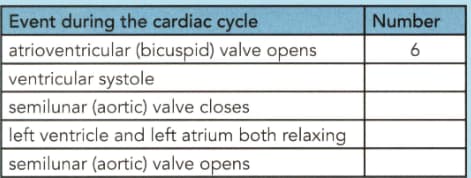The given figure shows the pressure changes in the left atrium, left ventricle and aorta throughout two cardiac cycles. Make a copy of this diagram.
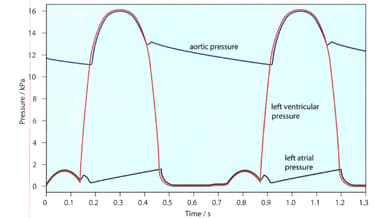
The contraction of muscles in the wall of the atrium raises the pressure inside it. This pressure also raised when the blood flows into the atrium from the veins, while the atrial walls are relaxed.
In your copy of the diagram mark the time when the atrium is relaxing. (atrial diastole)

In your copy of the diagram mark the time when the atrium is relaxing. (atrial diastole)
Important Questions on Transport in Mammals
The given figure shows the pressure changes in the left atrium, left ventricle and aorta throughout two cardiac cycles. Make a copy of this diagram.
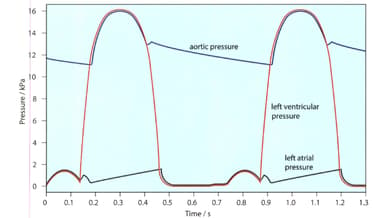
The atrioventricular valves open when the pressure of the blood in the atria is greater than that in the ventricles. They snap shut when the pressure of the blood in the ventricles is greater than in the atria.
On your diagram, mark the points at which these valves will open and close.
The given figure shows the pressure changes in the left atrium, left ventricle and aorta throughout two cardiac cycles. Make a copy of this diagram.
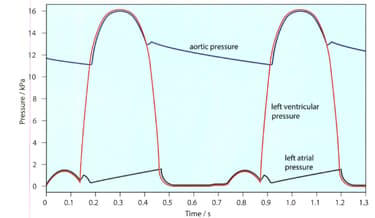
The opening and closing of the semilunar valves in the aorta depends on the relative pressures in the aorta and ventricles. On your diagram, mark the points at which these valves will open and close.
The given figure shows the pressure changes in the left atrium, left ventricle and aorta. Make a copy of this diagram.
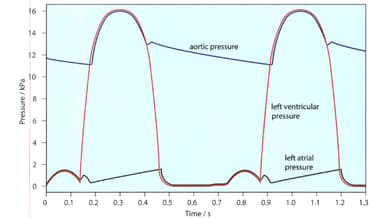
The right ventricle has much less muscle in its walls than the left ventricle, and only develops about one quarter of the pressure developed on the left side of the heart. On your diagram, draw a line to represent the probable pressure inside the right ventricle over the 1.3 seconds down.
The given diagram shows a cross-section of the heart at the level of valves.
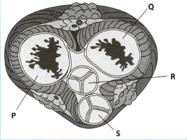
Complete the following chart to show the pathway of the blood through heart.

The given diagram shows a cross-section of the heart at the level of valves.
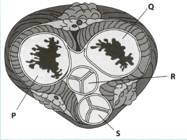
Explain how the valves P and Q ensure the one way flow of blood through the heart.
The cardiac cycle describes the events that occur during one heartbeat. The following figure shows the changes in blood pressure that occur within the left atrium, left ventricle, and aorta during one heartbeat.
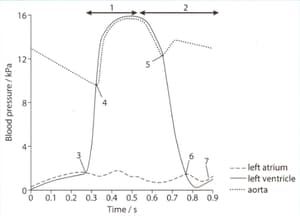
Copy and complete the table below. Match up the event during the cardiac cycle with an appropriate number from 1 to 7 on the diagram. You should put only one number in each box. You may use each number once, more than once or not at all. The first answer has been completed for you.
.